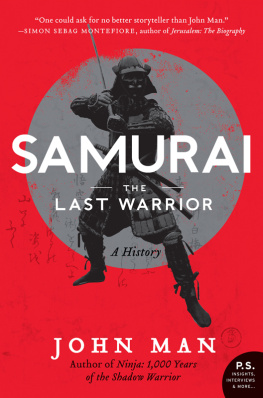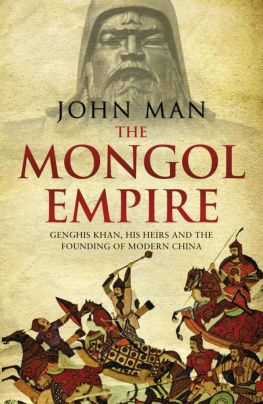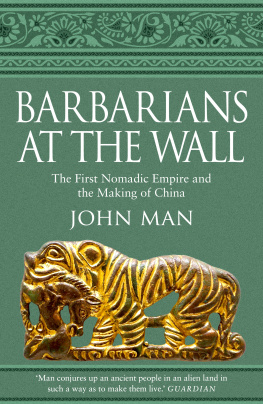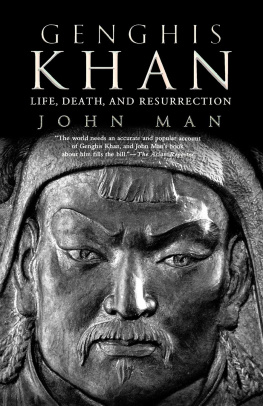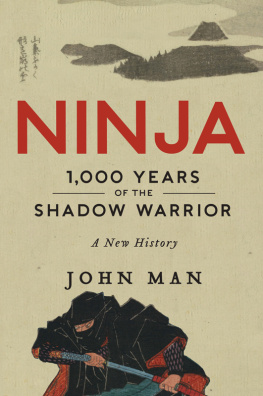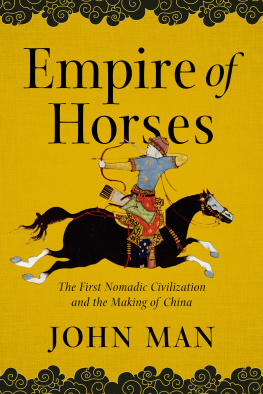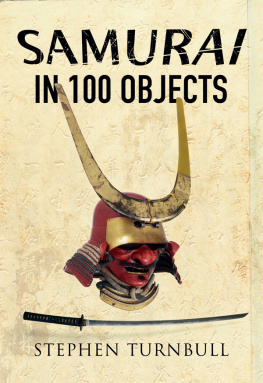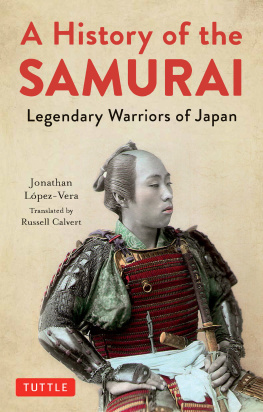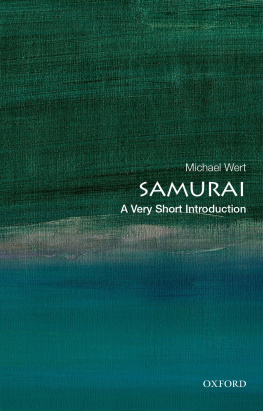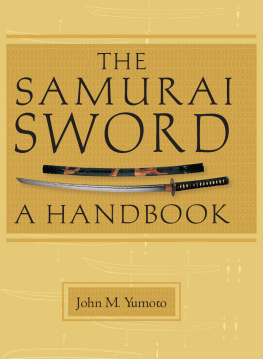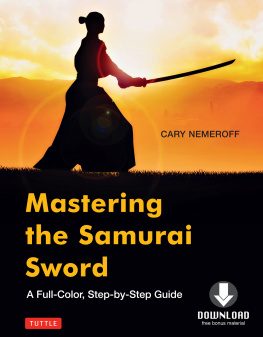Except for Japanese names and words common in English (e.g., Tokyo), Japanese has been romanized according to the revised Hepburn system, with a macron to indicate long vowels, mainly the o . Unfortunately, because most e-book formats cannot accommodate macron symbols, these marks are absent from all electronic editions.
Traditionally, Japan used the lunar calendar, which divided the year into twelve months, each with 29 or 30 days. This gave 354 days in each year, so a thirteenth month had to be added every three years (approximately, because one year is about, 365.25 days, not an exact number of whole days). On January 1, 1873, the Japanese government adopted the Gregorian calendar. Some sources use both systems, but to avoid confusion I use only the Gregorian.
Australia
HarperCollins Publishers (Australia) Pty. Ltd.
Level 13, 201 Elizabeth Street
Sydney, NSW 2000, Australia
http://www.harpercollins.com.au
Canada
HarperCollins Canada
2 Bloor Street East - 20th Floor
Toronto, ON, M4W, 1A8, Canada
http://www.harpercollins.ca
New Zealand
HarperCollins Publishers (New Zealand) Limited
P.O. Box 1
Auckland, New Zealand
http://www.harpercollins.co.nz
United Kingdom
HarperCollins Publishers Ltd.
77-85 Fulham Palace Road
London, W6 8JB, UK
http://www.harpercollins.co.uk
United States
HarperCollins Publishers Inc.
10 East 53rd Street
New York, NY 10022
http://www.harpercollins.com
My research would have been impossible without the committed and expert help of Yamasaki Michiko (IS Interpreters Systems) in Kagoshima; general thanks also to Taka Oshikiri, SOAS, for help on translation; Colin Young, swordsman; Alan Cummings and Angus Lockyer, SOAS.
Many thanks to the following for their help:
In Kyoto: Noriko Ansell.
In Kagoshima: Fukuda Kenji, Museum of Meiji Restoration; Matsuo Chitoshi, Shokoshuseikan Museum (Shimazu History Museum); Kukita Masayuki, Kagoshima Prefectural Museum of Culture Reimeikan; Narasako Hidemitsu, director general, Kagoshima Prefectural Visitors Bureau and his wonderful staff, including Matsunaga Yukichi, Higashi Kiyotaka and Morita Mikiko; Takayanagi Tsuyoshi, Saigo Nanshu Memorial Museum; Yamaguchi Morio, guide; and Saigo Takafumi, artist, potter and president of the Saigo Takamori Dedication Organization.
In Amami Oshima: Yasuda Soichiro, Hisaoka Manabu, Sakita Mitsunobu and Ryu Shoichiro, all of the Saigo Nanshu Memorial Association.
In Okinoerabu: Oyama Yasuhiro, Saoda Tomio, Minami Sanekatsu, Take Yoshiharu and Nagao Futoshi, all of the Saigo Nanshu Memorial Association.
In Kumamoto: Kuskabe Kazuhide, guide.
In Miyazaki: Kodama Gosei, Saigo Takamori Lodging Place Museum.
As ever, Felicity Bryan and all at her agency, Gillian Somerscales, for superb editing, and all at Transworld: Doug Young, Simon Thorogood, Sheila Lee and Philip Lord.
Gobi
Atlas of the Year 1000
Alpha Beta
The Gutenberg Revolution
Genghis Khan
Attila the Hun
Kublai Khan
The Terracotta Army
The Great Wall
The Leadership Secrets of Genghis Khan
Xanadu
Ninja
The best detailed biographies of Saigo in English are those of Ravina and Yates. Both have extensive bibliographies. The remaining works in this list are my other main sources.
Adamson, Christopher. Tribute, Turf, Honor and the American Street Gang: Patterns of Continuity and Change since 1820. Theoretical Criminology , February 1998, 2 (1).
Booth, Alan. Looking for the Lost: Journeys through a Vanishing Japan . New York: Kodansha, 1996.
Bottomley, Ian and Anthony Hopson. Arms and Armor of the Samurai . New York: Crescent Books, 1988.
Buck, James H. The Satsuma Rebellion of 1877: From Kagoshima through the Siege of Kumamoto Castle. Monumenta Nipponica , vol. 28, no. 4 (Winter 1973).
Conlan, Thomas C. (trans. and interpretive essay). In Little Need of Divine Intervention: Scrolls of the Mongol Invasions of Japan . Ithaca, NY: Cornell University Press, 2001.
Conroy, Hilary. The Japanese Seizure of Korea, 18681910: A Study of Realism and Idealism in International Relations . Philadelphia: University of Pennsylvania Press, 1960.
Dore, R. P. Education in Tokugawa Japan . Berkeley: University of California Press, 1965.
Fairbank, John K., ed. Cambridge History of China , vol. 10: Late Ching, 18001911 . Cambridge: Cambridge University Press, 1978.
Freeman-Mitford, Algernon, Lord Redesdale. Tales of Old Japan . Los Angeles: Aegypan Press, 2009.
Harris, Victor and Nobuo Ogasawara. Swords of the Samurai . London: British Museum, 1990.
Hawks, Francis. Narrative of the Expedition of an American Squadron to the China Seas and Japan under the command of Commodore M. C. Perry . New York: D. Appleton & Co.; London: Trubner & Co., 1856.
Horowitz, Ruth and Gary Schwartz. Honor, Normative Ambiguity and Gang Violence. American Sociological Review , vol. 39, no. 2 (April 1974).
Ihara Saikaku. The Great Mirror of Male Love (trans. Paul Schalow). Stanford, Calif.: Stanford University Press, 1990.
. Tales of Samurai Honor . Tokyo: Monumenta Nipponica, 1991.
Ikegami Eiko. The Taming of the Samurai: Honorific Individualism and the Making of Modern Japan . Cambridge, Mass.: Harvard University Press, 1995.
Inazo Nitobe. Bushido: The Soul of Japan . Tokyo: Kodansha, 2002. (First publ. 1900.)
Katsu Kokichi. Musuis Story: The Autobiography of a Tokugawa Samurai (trans. and ed. Teruko Craig). Tucson: University of Arizona Press, 1988.
McCullough, Helen Craig, trans. and ed. The Taiheiki: A Chronicle of Medieval Japan. New York: Charles Tuttle/Columbia University Press, 1959.
McLaren, W., ed. Japanese Government Documents. Transactions of the Asiatic Society of Japan , vol. 42 (1914).
Makato Sugawara. Lives of Master Swordsmen . Tokyo: East Publications, 1996.
Marius B. Jansen, ed. Cambridge History of Japan , vol. 5: The Nineteenth Century . Cambridge: Cambridge University Press, 1989.
Mason, R. H. P. and J. G. Caiger. A History of Japan (rev. ed.). North Clarendon, VT: Charles E. Tuttle, 1997.
Mathers, E. Powys, trans. Eastern Love , vol. 7: Comrade Loves of the Samurai by Saikaku Ebara and Songs of the Geishas , limited ed. London: John Rodker, 1928.
Morris, Ivan. The Nobility of Failure: Tragic Heroes in the History of Japan . London: Secker & Warburg, 1975. (Contains an excellent chapter on Saigo.)
Mounsey, Augustus. The Satsuma Rebellion: An Episode of Modern Japanese History . London: John Murray, 1879.
Mushakoji Saneatsu. Great Saigo: The Life of Saigo Takamori , trans. and adapted by Moriaki Sakamoto. Tokyo: Kaitakusha, 1942. (Extremely rare. The only copy I found listed is in the Australian National Library.)
Myamoto Musashi. The Book of Five Rings (trans. William Scott Wilson). Tokyo, New York and London: Kodansha, 2001.
Nock, Elizabeth Tripler. The Satsuma Rebellion of 1877: Letters of John Capen Hubbard. Far Eastern Quarterly , vol. 7, no. 4 (August 1948), pp. 36875.
Ravina, Mark. The Last Samurai: The Life and Battles of Saigo Takamori . Hoboken, NJ: Wiley, 2004.
Roberts, John. The New Penguin History of the World , rev. ed. London: Penguin, 2004.
Safilios-Rothschild, Constantina. Honour Crimes in Contemporary Greece. British Journal of Sociology , vol. 20, no. 2 (June 1969).
Satow, Sir Ernest. A Diplomat in Japan . San Diego, Calif.: Stone Bridge Press, 2006. (First pub. London: Seeley, Service & Co., 1921.)
Shigeno Yasutsugu. Saigo Nanshu Itsuwa . Tokyo: Shoyu Kurabu, 1998.
Shinichi Miyazawa. Englishmen and Satsuma , limited ed. Kagoshima: Takishobou-Shuppan, 1988.

